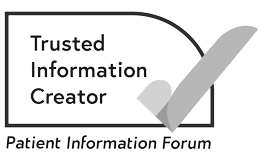Targeted therapies for lung cancer
Targeted therapies are drugs which interfere with the way cells grow and divide. They may be used to treat non-small cell lung cancer (NSCLC).
On this page
-
About targeted therapies for lung cancer
-
Tests on lung cancer cells
-
When are targeted therapy drugs given
-
How long do I have targeted therapies for
-
Which targeted drugs might I have?
-
BRAF V600 gene change
-
MET gene change
-
RET gene fusion change
-
KRAS gene change
-
NTRK gene change
-
Nintedanib (Vargatef®)
-
Side effects of targeted therapy drugs
-
How we can help
About targeted therapies for lung cancer
Targeted therapy drugs target something in or around the cancer cell that is helping it to grow.
They are usually used to treat non-small cell lung cancer (NSCLC) that is locally advanced or advanced.
If a targeted therapy drug is likely to work well for you, it might be your first treatment. Targeted therapy drugs for NSCLC are usually taken as tablets or capsules.
Tests on lung cancer cells
You will have tests on the lung cancer cells to check if targeted therapy drugs are likely to work for you. This is called molecular testing or biomarker testing.
The tests can check whether the cancer cells have certain gene changes (mutations). These are not inherited and cannot be passed from a parent to children.
The gene changes result in the lung cancer cells producing too much of a certain protein or making an abnormal protein. This encourages the cancer cells to grow.
There are different types of targeted therapy drugs for lung cancer. They work in slightly different ways.
Different drugs target the gene changes or proteins that are helping the cancer cells to grow. Drugs that work this way are called cancer growth inhibitors.
Some targeted therapy drugs also stop the cancer from developing new blood vessels. Drugs that work this way are called angiogenesis inhibitors.
Your doctor will talk to you about whether treatment with a targeted therapy drug is suitable for you.
When are targeted therapy drugs given
You might have a targeted therapy drug:
- on its own, sometimes as your first treatment
- after or with chemotherapy
- after lung cancer surgery to reduce the risk of the cancer coming back (called adjuvant therapy).
How long do I have targeted therapies for
You usually have a targeted therapy drug for as long as it works for you and side effects are not causing you problems. But some drugs might be given for a set period of time.
If the cancer grows while you are taking a targeted drug, your doctor might talk to you about having a different drug.
Which targeted drugs might I have?
After the cancer cells are tested, your cancer doctor will explain if targeted therapy is suitable for you and which drug is best for you. The drug you have depends on the gene change found in the lung cancer cells.
EGFR gene change
The epidermal growth factor receptor (EGFR) gene is the most common gene change (mutation) in non-small cell lung cancer. It makes an abnormal form of EGFR protein, which makes cancer cells grow. This is sometimes called EGFR-positive lung cancer.
It is more common in people with adenocarcinoma type NSCLC, non-smokers, women and Asian people.
Your doctor may talk to you about taking 1 of the following targeted therapy drugs:
- gefitinib (Iressa®)
- afatanib (Giotrif®)
- erlotinib (Tarceva®)
- dacomitinib (Vizimpro®)
- osimertinib (Tagrisso®) may be used after lung cancer surgery.
These drugs block signals from EGFR to the cancer cells and stops them growing. They are also known as EGFR inhibitor drugs.
EGFR Positive UK is a national charity. It provides information and support to people with EGFR positive lung cancer and their families.
ALK gene change
Some NSCLCs have a change in a gene called anaplastic lymphoma kinase (ALK). It makes an abnormal protein that can make the cancer cells grow. This is sometimes called ALK-positive NSCLC.
It is more common in younger people, especially women and non-smokers.
Your doctor may talk to you about taking one of these drugs:
- alectinib (Alecensa®)
- crizotinib (Xalkori®)
- ceritinib (Zydakia®)
- lorlatinib (Lorviqua) after you have already had other ALK drugs.
ALK Positive UK provides support to people with this type of lung cancer.
ROS1 gene change
If the lung cancer cells have a change in a gene called ROS1 your doctor may talk to you about taking either of these drugs:
- crizotinib (Xalkori®)
- entrectinib if you have not already had a ROS1 inhibitor drug.
This gene change is more common in younger women and people with adenocarcinoma type NSCLC.
BRAF V600 gene change
If the lung cancer cells have this gene change, your doctor might advise a combination of the drugs dabrafenib and trametinibdabrafenib (Tafinlar®) and trametinib (Mekinist®).
You usually have these drugs as your first treatment. The BRAF V600 gene change is more common in women and people with adenocarcinoma type NSCLC.
MET gene change
If NSCLCs have a specific change in a gene called MET ex14 skipping alteration, you might have a drug called tepotinib (Tepmetko®). Some people have it after chemotherapy, or as a first treatment.
RET gene fusion change
A small number of people with NSCLC have a change in the RET fusion gene. Fusion means the gene joins with part of another gene.
You might have a drug called selpercatinib (Retsevmo®) if you have advanced NSCLC and both of the following:
- You need more treatment after having chemotherapy or immunotherapy.
- You have not had treatment with another RET inhibitor drug.
KRAS gene change
Some NSCLCs have a specific gene change in the KRAS G12C gene. You might have a drug called sotorasib (Lumykras®). This is usually if you have already had chemotherapy with either cisplatin or carboplatin, or immunotherapy, or you cannot have these treatments.
NTRK gene change
If NSCLC has a gene change in 1 of the NTRK genes, you might have a drug called entrectinib (Rozlytrek®). This drug is also used to treat lung cancers with the ROS1 gene change.
Nintedanib (Vargatef®)
Nintedanib (Vargatef®) is a targeted therapy drug that blocks proteins from sending signals to the cancer cells to grow. It also stops the cancer cells from developing new blood vessels. Nintedanib is used to treat adenocarcinoma type NSCLC.
You might have nintedanib with the chemotherapy drug docetaxel if the cancer has:
- spread outside the lung, or to other parts of the body
- come back in the lung area and chemotherapy has not helped.
Side effects of targeted therapy drugs
The side effects depend on the type of drug you have. With some targeted drugs you might have very few side effects. But if left untreated, some side effects can become serious. Your cancer team will give you information about the possible side effects of the drug you are having. They will monitor you with regular check-ups and blood tests.
Always tell your cancer team about:
- any side effects you have
- side effects that are getting worse or not improving.
If you need advice or feel unwell, contact the hospital on the 24-hour contact number your cancer team gave you. Sometimes side effects can become serious very quickly. Always contact the hospital straight away for advice.
Managing side effects
Targeted therapy side effects can begin within days of starting treatment. But it is more common for them to happen weeks or months later.
Side effects can improve over time. Most side effects stop when you finish taking the drug. Some people may have side effects that continue after treatment. Your cancer team will give you advice on what you can do to manage side effects. They will prescribe drugs or other treatments to reduce certain side effects.
Sometimes the targeted therapy dose might need to be reduced or stopped for a time until side effects improve.
You can read more about side effects in the individual targeted drug pages.
About our information
This information has been written, revised and edited by Macmillan Cancer Support’s Cancer Information Development team. It has been reviewed by expert medical and health professionals and people living with cancer.
-
References
Below is a sample of the sources used in our lung cancer information. If you would like more information about the sources we use, please contact us at informationproductionteam@macmillan.org.uk
National Institute for Health and Care Excellence (NICE). Lung cancer – Diagnosis and management. Clinical guideline 2019. Last updated 2023. (accessed Nov 2023) Available at: https://www.nice.org.uk/guidance/ng122
European Society for Medical Oncology (ESMO). Small-cell lung cancer: ESMO clinical practice guidelines for diagnosis, treatment and follow-up. 2021. (accessed Nov 2023). Available at: https://www.esmo.org/guidelines/guidelines-by-topic/esmo-clinical-practice-guidelines-lung-and-chest-tumours/small-cell-lung-cancer
European Society for Medical Oncology (ESMO). Early and locally advanced non-small-cell lung cancer (NSCLC): ESMO clinical practice guidelines for diagnosis, treatment and follow-up. 2017. eUpdate 01 September 2021: New Locally Advanced NSCLC Treatment Recommendations (accessed Nov 2023) Available at: https://www.esmo.org/guidelines/esmo-clinical-practice-guideline-early-stage-and-locally-advanced-non-small-cell-lung-cancer
European Society for Medical Oncology (ESMO). ESMO expert consensus statements on the management of EGFR mutant non-small-cell lung cancer. 2022 (accessed Nov 2023). Available at: https://pubmed.ncbi.nlm.nih.gov/35176458/
Date reviewed

Our cancer information meets the PIF TICK quality mark.
This means it is easy to use, up-to-date and based on the latest evidence. Learn more about how we produce our information.
The language we use
We want everyone affected by cancer to feel our information is written for them.
We want our information to be as clear as possible. To do this, we try to:
- use plain English
- explain medical words
- use short sentences
- use illustrations to explain text
- structure the information clearly
- make sure important points are clear.
We use gender-inclusive language and talk to our readers as ‘you’ so that everyone feels included. Where clinically necessary we use the terms ‘men’ and ‘women’ or ‘male’ and ‘female’. For example, we do so when talking about parts of the body or mentioning statistics or research about who is affected.
You can read more about how we produce our information here.





